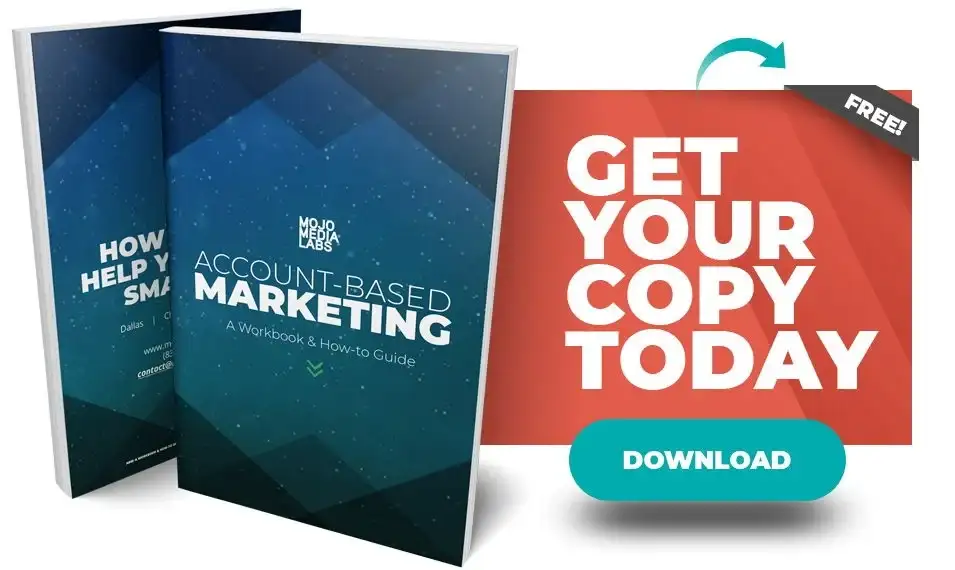Why You Need an Ideal Customer Profile in Account-Based Marketing
If you have explored implementing an account-based marketing strategy, you know you need to have a list of real accounts you want to close. This target account list transitions you away from a general focus on all companies in an industry to hyperfocus on a select few companies.
So if you are going to create a list of target companies, why do you need to have an ideal customer profile (ICP)?
The answer is simple.
- Alignment- Your ICP ensures your entire team is on the same page about the kinds of customers you should go after. It will become complicated to create a list of actual customers when you don't have alignment on your theoretical best-fit customers.
- Clarity- Your ICP provides you the framework to assess if a company should make your target list. Without an ICP, you have nothing to measure potential targets against. Your target account list is your ICP in the flesh.
- Correction- You likely will not get your target list 100% correct all of the time. There will be the occasional customer that you sign and doesn't fit your organization well at all. You then can revise your framework to refine your target list over time.
The remainder of this article will go in-depth on how to create an ICP designed to provide an actionable framework for account-based marketing (ABM). Ready to implement ABM? Let's talk.
Is Your Company Aligned?
As with every aspect of account-based marketing, alignment is critical. It's no different with your company's ICP.
Your marketing department shouldn't create the ideal customer profile alone. The ICP should come from a collaborative conversation between Marketing, Sales, Operations, Customer Support, and Finance.
If you are having trouble creating an ideal customer, take a step back and assess your company's goal. Your ICP should reflect the kinds of customers that will push your company forward. If you can't agree on your ICP, you may not have alignment around company goals.
Donald Miller, CEO of Business Made Simple, provides an excellent framework for creating a company goal. Just fill in the blanks.
"We will accomplish/be __________ by/in __________ because _______"
For example, "Mojo Media Labs will have 100 clients on retainer by the end of 2023 because great companies deserve great marketing that delivers ridiculous results."
Target companies that align with your operation and display an obvious need for your services. If a company lands on your list but doesn't meet these criteria, they shouldn't stay on your target account list.
Start With Your Most Successful Customers
When you hear the word ideal, you immediately assume this ideal will never become a reality. With account-based marketing, your potential customers transform into your favorite ones with your target account list.
You already have customers. Rather than reinventing the wheel, start by identifying the perfect fit customers and clients you already have.
To identify your best existing customers:
- Speak to your finance department: ABM typically results in a dramatic increase in ROI. This increase in ROI comes from specifically targeting companies that will likely provide higher profitability. Your finance department should have the ability to create a list of customers that don't just bring in the most revenue but are the most profitable overall.
- Speak with your customer support: When you provide exactly what the customers need, support efforts are light and easy to facilitate. Your customer support can provide a list of pleasant to work with customers–and the ones left off usually speak for themselves. Look between the lines on this list. If a customer isn't showing up on this list, it's likely a company you would want to consider when creating your ideal customer profile.
- Speak to your sales team: You need alignment across departments for ABM to work effectively, but especially between marketing and sales. Your marketing and sales should stay in constant communication. This specific conversation will provide a couple of insights.
First, you can understand the current number of customers closed each year. Knowing the present number will help you set reasonable expectations for your ABM campaigns.
Second, your sales team knows which customers were such a good fit that they closed themselves. You want to target customers where your product or service makes so much sense that you become the basis of comparison. - Define your best customers: At this point, you have three or four lists in front of you.
Ideally, your best customers have:
-
- Large agreements
- Long-term retention rates
- Collaborative relationships
- Trust in your company as an advisor
Your company has become an essential part of their team, and your Sales team might even have the potential to upsell.
The simplest way to create a combined list reflecting the outlined criteria above is to see what companies consistently appear on the lists provided by finance and sales that don't appear on a negative customer support list.
High profitability, easy to close, and low need for additional support are likely the exact customers you want to work with.
- Create a list of common traits: Now that you have a list of your best existing customers, it's time to start identifying the common traits between them. Below are traits to consider when creating your ICP. They are the same traits you will want to consider when documenting traits about your existing customers.
We would recommend documenting these traits in a shared spreadsheet to keep things organized.
Identifying your best customers is just the first step. Though this step will provide you some direction and clarity regarding your ideal customers, the traits outlined from these customers alone won't provide everything you need for a practical framework.

Document Your Ideal Customer Profile
Creating your ICP isn't just an exercise for marketing and sales. Your ICP should be accessible by anyone in your company and tie directly back to your company goals. Additionally, your ICP should provide valuable information across departments.
When compiling your ICP, you will want to note the following traits for each account:
Firmographics
These are the company-specific traits that relate directly to the business rather than the individual. Be sure to include:
- Company Size: How many people work there?
- Company Revenue: How much does the company make on average annually?
- Geographic Location: Where are their headquarters and branch locations?
- Relevant Products: What do they sell?
- Industry: Where do they sell?
- Negative Considerations: What roadblocks might you encounter along the way?
- Budget: How much can they spend on your business's services?
Technographics
You may want to include the technology your ideal customer will have in their tech stack. As you look at your current customers, you may realize many of them had the same key piece of technology that worked well with your product or service. You may also want to consider what they will be open to incorporating in the future.
Be sure to note:
- Current tech programs: What are they using now?
- Future tech investments: What should they use in the future?
- Capacity for tech maintenance: Can they actively maintain their current product suite?
Buyer Personas
Buyer personas are traditionally an Inbound Marketing element but can help clarify your marketing in ABM. Buyer personas can help your ABM initiatives engage the right individuals within the target accounts.
Yes, the focus of ABM is the company account. But you must factor in the people you need to engage so sales can close the account. ABM is about getting the right message to the right people in the right accounts at the right time. Your ABM initiatives will fail if you don't factor in where your message is going within the organization.
Understanding the mindset of the key decision-makers at the accounts is critical for success with ABM.
Some key points to include in your buyer personas include:
- Location: Where does this buyer reside?
- Age: How old are they, and how does that influence their decision-making?
- News Source: Where do they get their information, and what outlets do they trust? Where can you reach them?
- Income: How much do they make, and how will this affect their decisions?
- Pain Points: What do they struggle with at their company, and how can you help them resolve their current issues?
- Goals: What do they want to achieve at their company?
- Objections to Purchase: Why would they say "no" to doing business with you?
The negative points are also worth considering at both account and decision-maker level. When you know what will make them turn down your business proposal, you are better suited to encourage them to accept your partnership.
Important Note: Additionally, tiers are also beneficial within the Ideal Customer Profile. Generally, three tiers is a good rule of thumb to help prioritize who to target. These tiers will be based on firmographics and relate to revenue, company size, industry, and geography.
By tiering priority Ideal Customer Profiles now, you will have better direction when building target account lists in the next step and better prioritize marketing and sales efforts based on those tiers.
Your ICP Directly Influences Your Target Account List
After you have collaboratively created the proposed ICP, take it to your leadership team. The leadership team will provide their input on the profile's accuracy, look at your evidence, and either approve or provide feedback to further focus on what truly defines an ideal customer.
Once their buy-in is secured, you will move onto building out your target account list.
Without the ICP, the next step in the ABM process is virtually impossible. Account-based marketing is a strategic marketing program that targets specific companies, not entire industries. It starts with an intense focus on a target list built out from the ICP, then expands within those target accounts to engage key decision-makers.
Everything starts from the Ideal Customer Profile, so build your list carefully.
Continuing Improvements
Once you have built your list and start targeting accounts, you may find some of the identified traits are significant indicators of success, while others have little to no impact. Additionally, you may discover new traits that also provide tremendous insights into your potential success with a company.
Account-based marketing is an iterative process. As you gather more data and interact with customers, you will refine the true indicators of success.
Additionally, your business is an iterative and ever-changing process itself. As your business evolves, so too will your ICP.
Start Building
Now that you know how to build an ideal customer profile, it's time to get started. Bring out the whiteboard, schedule collaborative sessions, and brew your favorite blend. This process may take some time, but it's worth it.
Need help making the most out of ABM? Our team is here to support you at every step of the journey. Schedule a call today.



